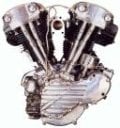I'm probably asking the obvious, but did you download/write the 1920x1200_60.
cmb
to the EEPROM and then restart gfx or reboot <rather than 1920x1200_60.vfo>? Because IR graphics are muli-channel, they require a combination file - loading a single/uncombined vfo file isn't supported. If you haven't, try I'd suggest doing so with ircombine, rather than setmon. If you're stuck at the command line and find setmon's syntax a little more user friendly, you can write the cmb file to the EEPROM with setmon via the -x or -w command line switches, but I'd still suggest you reinitialize graphics.
The
setmon man page
gives a brief description of the reasoning for using combination files:
man setmon wrote:
Infinite Reality Graphics
always operates as a multiple-channel device, and a simple
video format for a single channel is insufficient to describe
the operation of the entire video subsystem. Instead of simple
video formats, only video format
combinations
are supported.
On Infinite Reality, setmon requires a combination file - a
file describing frame buffer layout and formats for all
channels - as the format parameter. These combination files
can be built with a program, ircombine(1g), that assembles an
ensemble of formats. The individual formats used by
ircombine(1g) reside in /usr/gfx/ucode/KONA/dg4/vfo, and are
described in /usr/gfx/ucode/KONA/dg4/vfo/README.
A number of pre-built combinations can be found in the
directory /usr/gfx/ucode/KONA/dg4/cmb. The names of these
files are sometimes precisely descriptive of their content, but
you can use ircombine(1G) to extract a full analysis of any
combination. Note that if you create new combinations of your
own, you must place them in /usr/gfx/ucode/KONA/dg4/cmb before
they can be loaded with setmon.
For backward compatibility, setmon supports a set of pre-built
combinations that contain only one format each. These
combinations are named similarly to the corresponding formats
on Reality Engine.
If you'd like to try to build your own vfo file, the readme file located in /usr/gfx/ucode/KONA/dg4/vfo gives specifics of the parameters used to build each of the pre-existing graphics modes. There's a DG4 definition file in /usr/gfx/ucode/vfc/rules/dg4.def for use with the video format compiler that might work better for you than the MGRAS block sync.
If you're working from a command line, ircombine can be run from there as well <see "man ircombine">. I've successfully used the ircombine GUI to load and display that same sample 1920x1200_60.cmb on a <different> 24" LCD.
Although they might not be the optimal resolution, it looks like your monitor does support other display modes. 1600x1200, 1024x768 and even 800x600, but interestingly *not* 1280x1024. You might try a few of those to see if your monitor will accept them <and it would allow you to work in the ircombine GUI>. You could also try the 1920x1200_66 combination file to see if your monitor will accept that.
Other than that, you just might have a monitor that isn't compatible.







